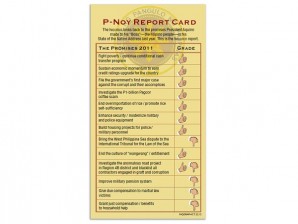OK all the way, thumbs down on quite a few
As of June 27, 2012, the Pantawid Pamilyang Pilipino Program has reached out to a total of 3,014,586 families, a little more than the 2012 target of 3 million. Of this figure, Mindanao has the highest number of beneficiaries totaling 1,294,946, followed by Luzon (1,030,078) and Visayas (689,562).
Between January and February 2012, the program reported a compliance rate of 95.89 among mothers who visited healthcare centers for checkups and immunization of their babies; 97.97 percent among mothers who brought their kids to healthcare centers for deworming; 95.15 attendance rate in day-care center among kids; and 96.40 attendance rate for primary and secondary schoolchildren.
In May, the Social Weather Stations (SWS) found that self-rated poverty dropped to an estimated 10.3 million Filipino households, or 51 percent of total households in the country. The figure declined from the 11.1 million households, or 55 percent, recorded in March.
Those who said they were poor in terms of food accounted for 39 percent, which translated to approximately 7.9 million households, a drop from the 45 percent or 9.1 million families recorded in March.
Sustain economic momentum to earn credit ratings upgrade for the country
Article continues after this advertisementThe Philippine economy grew by only 3.7 percent in 2011, below the government target of 4.5 to 5.5 percent, amid external economic problems and government underspending on infrastructure in the second and third quarters.
However, in the first quarter of 2012, the country’s gross domestic product grew by 6.4 percent, which was on record as the highest in Southeast Asia and the second highest in Asia. Romulo A. Virola, secretary general of the National Statistical Coordination Board (NSCB), attributed much of the growth to the services sector (4.7 percentage points), followed by industry (1.6 points), and agriculture, fisheries and forestry (0.1 point).
